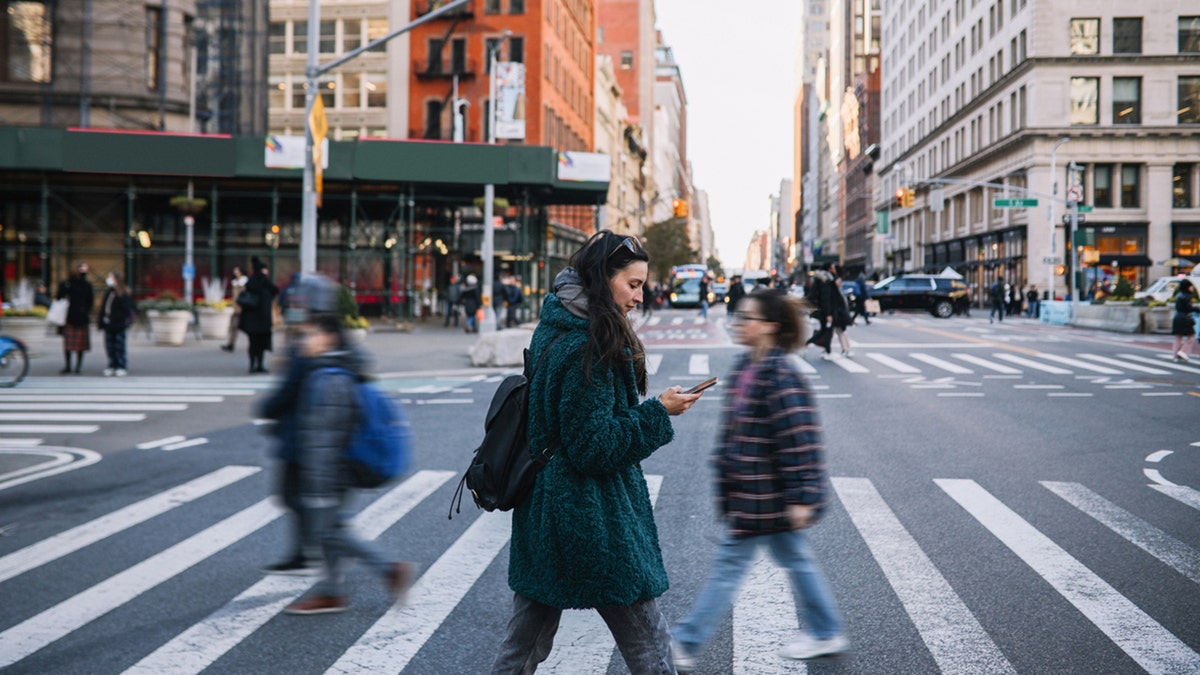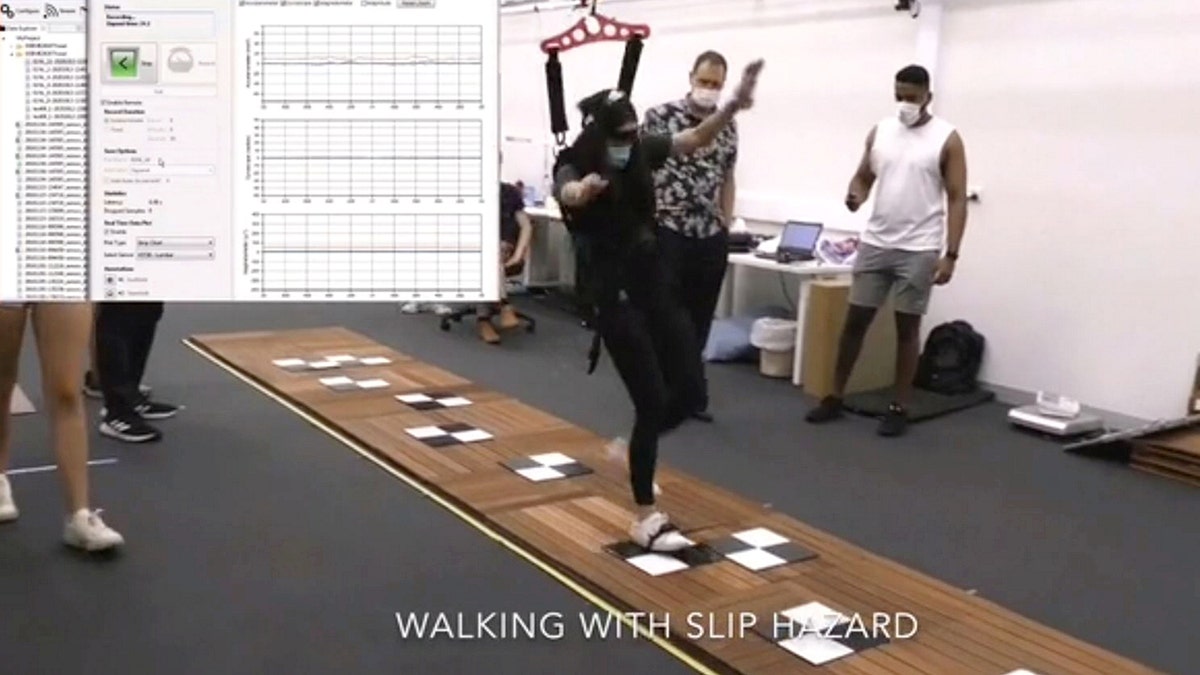Young drivers learn dangers of texting while driving
New course gives folks a firsthand look at the downside of multitasking.
Young people are more likely to fall while they're texting and walking at the same time as opposed to walking without texting, a new study has found.
Neuroscientist and engineer Dr. Matthew Brodie and Dr. Yoshiro Okubo at the University of New South Wales in Australia conducted the study.
Brodie told SWNS, the British news service, that he wanted to perform the study to see if the often-discussed dangers of texting and walking at the same time were real.
HONOLULU BANS TEXTING WHILE WALKING ACROSS THE STREET
"On any day, it seems as many as 80% of people, both younger and older, may be head down and texting," he said.
"I wanted to know if these dangers are real or imagined and to measure the risk in a repeatable way," he also said in a release about the study.

Young people really are more likely to fall when texting while walking, a new study done in Australia has found. (SWNS)
The authors took a group of 50 undergraduate students and put them in a simulated environment along with random "threats" and hazards, as a release about the study explained.
For instance, the students were asked to walk across a tiled hazard walkway at the Neuroscience Research Australia’s gait lab — it had one hidden tile that could slide out of place, potentially.
THE DANGERS OF TEXTING AND WALKING
If the students were to walk on that tile, they could slip and fall down.

During the study, young people were tested as they texted messages while sitting down — and then texting the same messages while walking. (iStock)
The students wore a safety harness during the test and were asked to walk without texting — and then once again while texting a sentence, "The quick brown fox jumps over the lazy dog," as the release also detailed.
After analyzing the angle at which the participants were walking, the authors found the students more likely to fall if they were also texting.
The findings were published in the open access journal Heliyon, part of the Cell Press family.
"Such different approaches reinforce how no two people are the same."
The results proved that not only were the students more likely to fall when texting, but their texting accuracy was also low.
CLICK HERE TO SIGN UP FOR OUR LIFESTYLE NEWSLETTER
"What surprised me is how differently people responded to the threat of slipping," said Brodie, referencing the way the young people were told ahead of time that there were dangers ahead.
"Some slowed down and took a more cautious approach. Others sped up in anticipation of slipping. Such different approaches reinforce how no two people are the same — and to better prevent accidents from texting while walking, multiple strategies may be needed."

The study proved that people were more likely to slip when they were texting than when they were just walking without texting. (SWNS)
Said Brodie, "The highest texting accuracy occurred when participants were seated, but accuracy decreased even as walking participants were cautioned about a potential slip that did not occur," as SWNS reported.
Brodie said that young people are more likely to take risks — so this might not be a statement intended for the entire population.
He told SWNS that perhaps technology could be developed to help prevent injuries that might occur from walking and texting at the same time.
CLICK HERE TO GET THE FOX NEWS APP
He suggested implementing a locking technology, similar to what is used when people are driving, for those walking and looking at their screen.
"The technology could detect walking activity and activate a screen lock to prevent texting during that time," he said.


